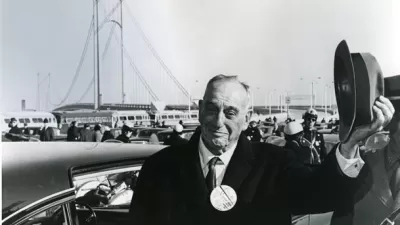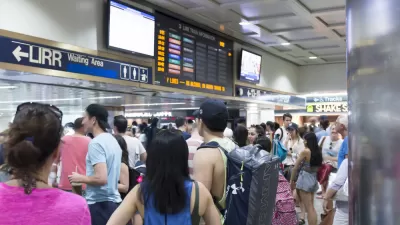Has historic preservation been responsible for making New York a luxury city? A former member of the city's Landmarks Preservation Commission argues no.
Roberta Brandes Gratz, author of The Battle For Gotham: New York in the Shadow of Robert Moses and Jane Jacobs, doesn't think landmarking deserves the bad rap it's received in some quarters.
"Critics of historic preservation make the egregious error of assuming that landmarking stops change, growth and other categories of 'progress.' They also mistakenly assume that it is the designation of these neighborhoods that make them increasingly expensive, forgetting that New York City has become a city for the rich and the poor for national and local economic reasons that have nothing to do with preservation."
The future, she says, is in density:
"For most of the 20th century, in fact until only recently, the planning and policy mantra has mistakenly been that de-densifying cities fights crime and poverty. Finally, recognition that the reverse is true is being recognized. De-concentrating poverty is not the same thing as de-densifying neighborhoods. Only the latter has long been happening with the new construction.
"It is indeed true, as preservation naysayers love to point out, that historic districts have become expensive but it is not because new excessively tall skyscrapers are not allowed; it is because these areas -- and many undesignated ones like them -- are considered the most desirable neighborhoods to live in."
Thanks to Matt Sledge
FULL STORY: Landmarking Urban Change in New York

Alabama: Trump Terminates Settlements for Black Communities Harmed By Raw Sewage
Trump deemed the landmark civil rights agreement “illegal DEI and environmental justice policy.”

Study: Maui’s Plan to Convert Vacation Rentals to Long-Term Housing Could Cause Nearly $1 Billion Economic Loss
The plan would reduce visitor accommodation by 25% resulting in 1,900 jobs lost.

Why Should We Subsidize Public Transportation?
Many public transit agencies face financial stress due to rising costs, declining fare revenue, and declining subsidies. Transit advocates must provide a strong business case for increasing public transit funding.

Wind Energy on the Rise Despite Federal Policy Reversal
The Trump administration is revoking federal support for renewable energy, but demand for new projects continues unabated.

Passengers Flock to Caltrain After Electrification
The new electric trains are running faster and more reliably, leading to strong ridership growth on the Bay Area rail system.

Texas Churches Rally Behind ‘Yes in God’s Back Yard’ Legislation
Religious leaders want the state to reduce zoning regulations to streamline leasing church-owned land to housing developers.
Urban Design for Planners 1: Software Tools
This six-course series explores essential urban design concepts using open source software and equips planners with the tools they need to participate fully in the urban design process.
Planning for Universal Design
Learn the tools for implementing Universal Design in planning regulations.
Caltrans
Smith Gee Studio
Institute for Housing and Urban Development Studies (IHS)
City of Grandview
Harvard GSD Executive Education
Toledo-Lucas County Plan Commissions
Salt Lake City
NYU Wagner Graduate School of Public Service





























